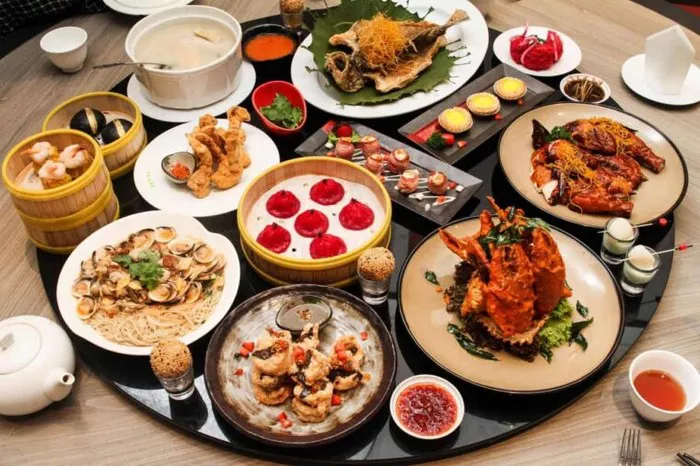Christmas, a time of festive cheer and culinary delights, is often marked by cherished traditions that vary across cultures and regions. One such tradition, deeply rooted in many households worldwide, is the choice of meat that graces the Christmas dining table. From succulent roasts to flavorful braises, the selection of meat plays a pivotal role in shaping the holiday feast. While preferences can differ significantly depending on cultural heritage and personal taste, several meats have emerged as perennial favorites during this joyous season.
Roast Turkey: A Timeless Classic
In many Western countries, particularly in the United States and parts of Europe, roast turkey stands as the quintessential centerpiece of the Christmas dinner table. This tradition harkens back to historical roots when turkey became symbolic of abundance and celebration. Its large size makes it ideal for feeding extended families gathered together in festive spirit. The turkey’s tender, juicy meat, when complemented by stuffing, cranberry sauce, and gravy, creates a harmonious blend of flavors that embodies the essence of Christmas indulgence.
The preparation of roast turkey is often a labor of love, involving careful seasoning, basting, and roasting to achieve that perfect golden brown exterior and moist interior. Families may have their own unique recipes and techniques passed down through generations, adding a sense of heritage and nostalgia to the holiday meal.
Ham: A Savory Alternative
In contrast to turkey, ham holds sway as a popular choice for Christmas meals in many households, especially in Scandinavian and Central European traditions. Cured and often smoked, ham offers a rich, savory flavor that pairs impeccably with a variety of sides, from scalloped potatoes to spiced fruits. Its versatility allows for both warm, hearty slices straight from the oven and cold cuts for subsequent days of festive snacking.
The process of preparing a Christmas ham involves careful attention to the curing and smoking process, ensuring a depth of flavor that is both robust and nuanced. Glazing the ham with honey, mustard, or fruit preserves adds a touch of sweetness that balances the salty richness, making it a tantalizing choice for celebratory feasts.
Beef: Elegance and Flavor
For those seeking a more luxurious option, beef in its various forms—whether prime rib, tenderloin, or brisket—commands attention on the Christmas table. Known for its robust flavor and tender texture, beef offers a sophisticated alternative to poultry or pork. Prime rib, in particular, with its marbled fat and juicy meat, epitomizes indulgence and is often reserved for special occasions like Christmas.
The preparation of beef for Christmas dinner demands precision and patience, from selecting the right cut to ensuring proper cooking temperatures for optimal taste and tenderness. Accompaniments such as horseradish sauce, Yorkshire pudding, or roasted vegetables enhance the beef’s natural flavors, creating a meal that is both hearty and refined.
SEE ALSO: What Is a Common Easter Dinner
Lamb: A Global Delight
In many Mediterranean and Middle Eastern cultures, lamb takes center stage during Christmas celebrations. Whether roasted whole with fragrant herbs and garlic or braised to tender perfection, lamb offers a distinctive flavor profile that reflects its cultural significance. Its rich taste and tender meat make it a favorite among those seeking to infuse their Christmas meal with international flair.
The preparation of lamb for Christmas varies widely, from slow-roasting methods that allow the flavors to meld over hours to quick-searing techniques that preserve the meat’s natural juiciness. Accompanied by couscous, roasted root vegetables, or mint sauce, lamb offers a festive feast that satisfies both the palate and the soul.
Vegetarian and Alternative Choices
In recent years, the culinary landscape of Christmas dinners has expanded to accommodate diverse dietary preferences and ethical considerations. Vegetarian and vegan options, such as nut roasts, stuffed squash, or plant-based roasts, have gained popularity as festive alternatives to traditional meats. These dishes showcase creativity and innovation in the kitchen while ensuring that everyone around the table can partake in the joy of Christmas feasting.
Conclusion
As Christmas approaches each year, the choice of meat for the holiday table becomes a reflection of cultural heritage, personal preference, and culinary innovation. Whether it’s the classic roast turkey, the savory allure of ham, the elegance of beef, the global appeal of lamb, or the creativity of vegetarian options, each choice carries with it a story of tradition and taste that binds families and communities together.
Ultimately, the most eaten meat on Christmas varies widely across the globe, shaped by regional customs, familial rituals, and individual tastes. Yet, regardless of the choice, the spirit of Christmas dining remains unchanged—a celebration of togetherness, generosity, and the joy of sharing a meal with loved ones. As traditions evolve and new culinary trends emerge, one thing is certain: the Christmas table will continue to be adorned with dishes that honor the past while embracing the present, creating lasting memories for generations to come.
Related Topics:
























